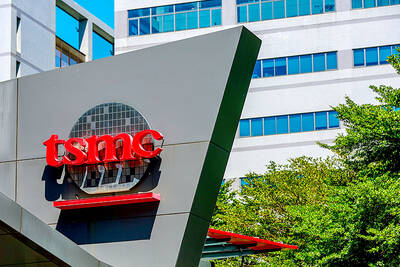Trade negotiators on Saturday tentatively agreed to eliminate tariffs on an array of technology products valued at US$1 trillion worth of global commerce.
The breakthrough toward the WTO’s Information Technology Agreement (ITA) took place at an ambassadors’ meeting at the EU embassy in Geneva.
“Very optimistic that we’ll have a final successful deal by the end of next week,” WTO Director-General Roberto Azevedo said on Twitter. “We have the basis for an agreement.”
US Trade Representative Michael Froman hailed a “major breakthrough” in what would be the first significant tariff-cutting deal at the WTO in 18 years.
“This will open overseas markets for some of America’s most competitive companies and workers,” he said in an e-mailed statement. “We are confident that all parties will now give formal approval to their participation.”
TAIWAN AND CHINA
In talks that started on Tuesday, members took on the question of various tariffs, notably on LCD screens, which were contested by Taiwan and China, and an EU request concerning car radios. South Korean negotiators withdrew their opposition to an extended agreement and members agreed to consider a draft list of covered products.
Tariffs on semiconductors, magnetic resonance imaging machines, global positioning system devices, printer ink cartridges, video game consoles and other products would be cut to zero under the deal, according to the US Trade Representative office.
The expanded product list will now undergo consideration from trade ministers at their various capitals.
“We have the basis for an understanding,” Azevedo told reporters in Geneva after the meeting. “The list is out, members are going to consult their capitals, and we will know by Friday whether we have final approval on the list of products and the declaration itself.”
The product list could pave the way for a finalized deal that would contribute as much as $US190 billion to global GDP and support 60,000 US jobs.
250 PRODUCTS
Technology manufacturers like Intel Corp, Samsung Electronics Co, Sandisk Corp and Texas Instruments Inc stand to benefit from the elimination of tariffs on about 250 products.
The 80 WTO countries that participate in the ITA talks account for about 97 percent of global trade in IT products.
The ITA requires participants to eliminate import tariffs on technology products on a most-favored-nation basis, meaning that any duty-free terms are applied to all WTO members.
In September, ITA negotiators are to start talks on schedules of concessions for tariff reductions, also known as staging.
That allows countries to gradually phase in the tariff reductions for certain products deemed too sensitive for the ITA’s various signatories.
DECEMBER TALKS
Negotiators are also set to hold technical negotiations with the goal of completing the agreement by the WTO Ministerial Conference scheduled to be held between Dec. 15 and Dec. 18 in Nairobi, Kenya.
US technology industry officials are hopeful the deal could enter into force as soon as July next year.

RUN IT BACK: A succesful first project working with hyperscalers to design chips encouraged MediaTek to start a second project, aiming to hit stride in 2028 MediaTek Inc (聯發科), the world’s biggest smartphone chip supplier, yesterday said it is engaging a second hyperscaler to help design artificial intelligence (AI) accelerators used in data centers following a similar project expected to generate revenue streams soon. The first AI accelerator project is to bring in US$1 billion revenue next year and several billion US dollars more in 2027, MediaTek chief executive officer Rick Tsai (蔡力行) told a virtual investor conference yesterday. The second AI accelerator project is expected to contribute to revenue beginning in 2028, Tsai said. MediaTek yesterday raised its revenue forecast for the global AI accelerator used

Taiwan Semiconductor Manufacturing Co (TSMC, 台積電) has secured three construction permits for its plan to build a state-of-the-art A14 wafer fab in Taichung, and is likely to start construction soon, the Central Taiwan Science Park Bureau said yesterday. Speaking with CNA, Wang Chun-chieh (王俊傑), deputy director general of the science park bureau, said the world’s largest contract chipmaker has received three construction permits — one to build a fab to roll out sophisticated chips, another to build a central utility plant to provide water and electricity for the facility and the other to build three office buildings. With the three permits, TSMC

TEMPORARY TRUCE: China has made concessions to ease rare earth trade controls, among others, while Washington holds fire on a 100% tariff on all Chinese goods China is effectively suspending implementation of additional export controls on rare earth metals and terminating investigations targeting US companies in the semiconductor supply chain, the White House announced. The White House on Saturday issued a fact sheet outlining some details of the trade pact agreed to earlier in the week by US President Donald Trump and Chinese President Xi Jinping (習近平) that aimed to ease tensions between the world’s two largest economies. Under the deal, China is to issue general licenses valid for exports of rare earths, gallium, germanium, antimony and graphite “for the benefit of US end users and their suppliers

Dutch chipmaker Nexperia BV’s China unit yesterday said that it had established sufficient inventories of finished goods and works-in-progress, and that its supply chain remained secure and stable after its parent halted wafer supplies. The Dutch company suspended supplies of wafers to its Chinese assembly plant a week ago, calling it “a direct consequence of the local management’s recent failure to comply with the agreed contractual payment terms,” Reuters reported on Friday last week. Its China unit called Nexperia’s suspension “unilateral” and “extremely irresponsible,” adding that the Dutch parent’s claim about contractual payment was “misleading and highly deceptive,” according to a statement